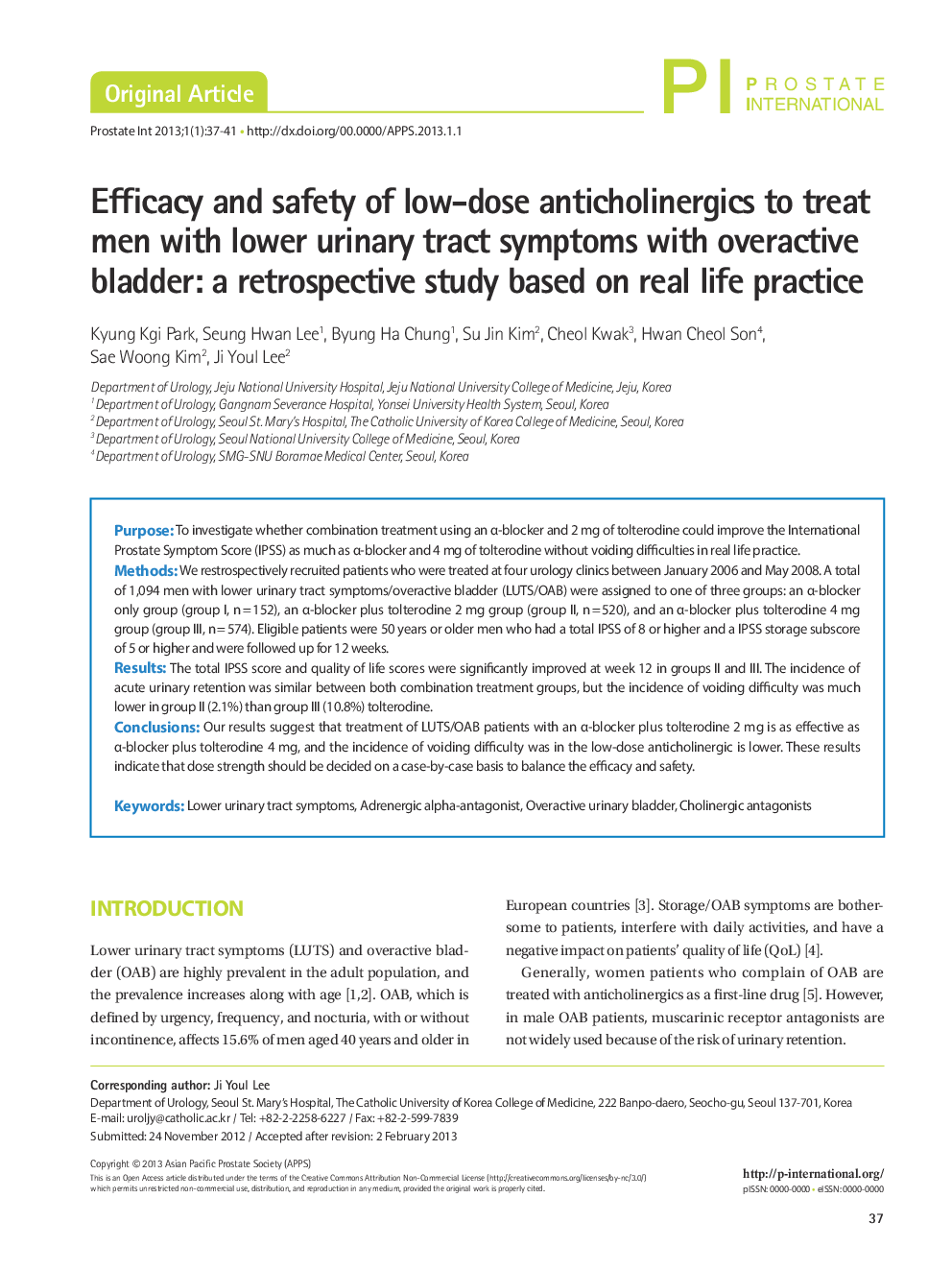| Article ID | Journal | Published Year | Pages | File Type |
|---|---|---|---|---|
| 4274154 | Prostate International | 2013 | 5 Pages |
PurposeTo investigate whether combination treatment using an α-blocker and 2 mg of tolterodine could improve the International Prostate Symptom Score (IPSS) as much as α-blocker and 4 mg of tolterodine without voiding difficulties in real life practice.MethodsWe restrospectively recruited patients who were treated at four urology clinics between January 2006 and May 2008. A total of 1,094 men with lower urinary tract symptoms/overactive bladder (LUTS/OAB) were assigned to one of three groups: an α-blocker only group (group I, n=152), an α-blocker plus tolterodine 2 mg group (group II, n=520), and an α-blocker plus tolterodine 4 mg group (group III, n=574). Eligible patients were 50 years or older men who had a total IPSS of 8 or higher and a IPSS storage subscore of 5 or higher and were followed up for 12 weeks.ResultsThe total IPSS score and quality of life scores were significantly improved at week 12 in groups II and III. The incidence of acute urinary retention was similar between both combination treatment groups, but the incidence of voiding difficulty was much lower in group II (2.1%) than group III (10.8%) tolterodine.ConclusionsOur results suggest that treatment of LUTS/OAB patients with an α-blocker plus tolterodine 2 mg is as effective as α-blocker plus tolterodine 4 mg, and the incidence of voiding difficulty was in the low-dose anticholinergic is lower. These results indicate that dose strength should be decided on a case-by-case basis to balance the efficacy and safety.
